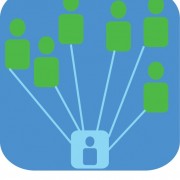Why Diversity Hiring Is Important
The world has its eyes on systemic racism. And now, more than ever, everyone seems committed to dismantling discrimination. But with the heightened attention comes the awareness of the complexity surrounding inequality. Diversity is complicated, and that’s why most companies fail to meet their Diversity, Equity & Inclusion goals.
Businesses tend to see diversity as a numbers issue. They see that a minority group comprises a certain percentage of the local population and then focus their efforts on having a similar percentage in their workforce. But emphasizing statistics ignores the uncomfortable factors that lead to poor diversity.
Leaders can address these issues within their workplace when they emphasize the benefits of diversity without downplaying its difficulties. Situational factors, privilege, and implicit bias drive inequality. These factors make conversations around diversity difficult. But companies that address the circumstances that lead to inequality ultimately reinforce the shared experience of living in our society. Ultimately, everyone in the organization will feel more valued. To streamline your diversity hiring, and making the process as simple and easy as possible, consider an ATS for your hiring needs. We have a Free ATS Buying Guide to provide all the information you would need!
Defining Diversity and Its Importance in the Workplace
Most business owners think of diversity in the workplace in terms of the compliance regulations imposed by the federal government. These regulations ensure equal employment opportunities for marginalized groups. Business owners agree diversity hiring in the workplace is important. But they tend to view their diversity hiring efforts under the narrow lens of the EEOC. They acknowledge hiring for diversity is important in the world and contributes to the greater good. Yet they also see diversity in the workplace as having very little impact on the company’s success.
Nothing could be further from the truth. Diversity in the workplace is good for the bottom line. In 2015, McKinsey and Company found that companies with a diverse workforce performed 15 to 35 percent better than the national industry median. This success underscores the importance of diversity in the workplace.
McKinsey followed up with a 2018 report that echoed the finding of the first: diversity is good for the bottom line. Companies with gender diversity at the executive level were 21 percent more profitable than their less diverse competitors. Companies with culturally diverse executive teams outperformed their competitors by 33 percent.
In both the 2015 and 2018 reports, McKinsey delivered bad news to companies with poor diversity. Companies that fail to cultivate gender and culturally diverse teams perform up to 29 percent worse than their competitors. Companies that fail to recruit minorities need to figure out how to increase diversity in the workplace.
Leverage Diversity in the Workplace
There are no disadvantages of diversity in the workplace. When companies go beyond simple compliance and truly leverage diversity on their teams, they can outperform their competitors. Businesses can better withstand unexpected challenges, such as a pandemic, when they leverage the benefits of diversity in the workplace.
Businesses can avoid “group think” when they prioritize diversity in the workplace. Companies with a diverse workforce will benefit from the different perspectives and experiences their employees bring to the table. Leveraging diversity on teams will lead to more creative solutions and innovations.
High-quality talent demands diversity as well. According to a survey by Glassdoor, 76 percent of respondents said diversity is important when considering job offers. Professionals under 35, especially, expect their employers to emphasize diversity, equity, and inclusion. Companies that prioritize diversity in their hiring efforts can attract and retain this top talent.
You’re more likely to understand your customers’ needs when you leverage diversity in the workplace. The U.S. is rapidly moving toward a diverse population. Will your workforce be diverse enough to meet the needs of an increasingly diverse consumer base?
Realizing the benefits of diversity in the workplace requires more than hiring for diversity. To really tap into the potential throughout your workforce, you need to leverage diversity. Leveraging elevates diversity from a numbers game for compliance to a comprehensive strategy for diversity hiring and development.
An Effective Hiring Process Includes Diversity
The first step to employing a diverse workforce is an effective hiring process that includes diversity as one of its primary goals. Impress upon your team the importance of an effective hiring process that emphasizes diversity. Companies that understand the importance of hiring and retaining the right employees are more successful.
One or two (or more) stakeholders may (silently) think the company should hire the best qualified individual rather than hire for diversity. Explain to your hiring team that the company will always seek out the most qualified person for the job. But unconscious biases often exclude highly qualified people from marginalized groups. Dismantling these unconscious biases is the first step to a hiring process that promotes diversity.
An article in the Harvard Business Review details a study conducted to uncover biases while rating resumes. They found that a female or minority candidate needed a 4.0 GPA to get the same rating as a white male with a 3.75 GPA. A white male with an impressive internship received a 50 percent higher rating than a female or minority with the same internship.
Understandably, your hiring team may feel uncomfortable with the idea that they, too, have implicit bias. However, leveraging diversity goes deeper than simply hiring for diversity. To have a truly inclusive workplace, your hiring team should understand and dismantle their own implicit biases.
Technology may help you avoid implicit bias in your candidate selection. Applicant tracking software can scan and sort resumes for qualifications. The resulting list will be free of human bias. ATS can also track your applicants to help you identify problem areas in your recruiting efforts.
Hiring Diverse Candidates for Your Organization
Hiring diverse talent requires intention and strategy. Even the most committed companies may fall short in their diversity goals when they fail to proactively recruit a diverse workforce.
Start by examining your requirements for the job, such as GPA. Applicants who come from low-income backgrounds likely had to work while attending college. Their GPA may have suffered under long work hours. Failing to account for situational differences among applicants can lead to poorer hiring decisions.
These situational differences extend to attaining a degree. Since the Great Recession, employers inflated the importance of degrees for entry and mid-level jobs. Yet, in 2016, just 30.8 percent of Black adults had attained a college degree, compared with 47.1 percent of white adults. Furthermore, degree holders in these jobs do not always perform better than high school graduates.
Reexamine the necessary skills for entry and mid-level jobs within your organization. Place a higher value on work experience. If you still find that candidates need specialized skills, consider recruiting from trade schools or implementing an in-house training program.
Consider your interviewing process from the lens of marginalized groups. Are you flexible with your scheduling? Do not doubt a candidate’s commitment just because she isn’t available for an interview until next week. Up to 58 percent of the nation’s low-income families belong to non-white racial groups. Candidates may be working multiple jobs or jobs with unconventional schedules.
You may be sabotaging your diversity hiring efforts if the application process and virtual interviews require too much technology. Black and Hispanic candidates have less access to the Internet and laptops. On the other hand, these candidates are more likely to primarily use cell phones for their job search and applications. A hiring process that embraces mobile technology can boost your efforts at creating a diverse workforce.

Workplace Diversity Goals in Hiring
You can create diversity hiring goals to gauge your success and examine areas for improvement. Good diversity goals focus on the corporate culture, the corporate branding, and corporate recruiting. Your company is more likely to meet its diversity goals if you effectively communicate them.
Your compliance reporting likely already contains information about how your hiring metrics compare with the general population for your area. You’ll have access to even more data if you use an applicant tracking system. Finally, examining your current workforce and diversity at all levels, including executive levels, can create a clearer picture.
Now that you’ve compiled your data, you can look for areas of improvement.
- Does your workforce include as least as many diverse employees as the community’s population?
- Are candidates from marginalized groups applying for jobs within your organization?
- Is one group disproportionately offered interviews compared to minority groups?
- Is your hiring team composed of a diverse group of people?
- Is there pay disparity in your company between marginalized groups and their peers?
- Does the demographic of your managerial and executive positions match the demographic of your entry level positions?
When you understand where your company is lacking, you can create actionable steps towards a more diverse workforce. These steps are more achievable if you communicate them correctly to your staff. Companies are more likely to achieve their diversity goals when leaders tell their teams that diversity is important and requires a focused effort. This creates a positive message around diversity and also creates buy-in from their staff.
Diversity Recruiting Strategy
Many companies find that minorities and marginalized individuals aren’t applying for open positions. A diversity recruiting strategy that proactively seeks these candidates can help. In addition to removing unnecessary the educational and technology requirements mentioned above, recruiters can implement strategies that encourage minority applicants.
Create a culture that values diversity and inclusion in recruitment and beyond. Incorporate your diversity initiatives into your company mission and value statements. Provide company-wide diversity training, with an emphasis on those in management and hiring teams. Include minorities in your company’s marketing campaigns. Emphasizing diversity within your organization and your branding will create a welcoming atmosphere for minorities.
Connect with community organizations. Look for associations that attract minority members. As you speak with professionals in your community, learn about the employment issues these groups are facing. Build a network that includes professionals in underrepresented groups. Lean on your network for employment referrals.
Expand your recruitment efforts to schools with a significant minority population. Minorities are underrepresented in the nation’s top schools. Companies face diversity recruiting challenges when they focus on a few universities. Instead, redirect some of your recruiting efforts to schools with ethnically diverse students.
Invest in an applicant tracking system. An ATS comes with several features to help you reach your diversity goals. You can more easily comply with diversity hiring laws with built-in compliance reporting. The ATS will also help you build a talent pool you can use for future openings. And the resume sorting capabilities of an ATS can help you ensure diversity in your recruiting and hiring practices. The right applicant tracking system will come with a fully mobile careers site that allows applicants to use their smart phones.
Final Thoughts
Diversity is hard, but well worth the effort. Federal compliance and the financial benefits of diversity will always be important. But the biggest reason to hire for diversity is because it’s the right thing to do.
The tragic stories in the news over the past year brings racism and bias to the forefront of our collective consciousness. At the same time, the pandemic has undone the gains women have made in the workforce. Now is the time for your company to recommit itself to Diversity, Equity, and Inclusion.
If you’re interested in learning how applicant tracking and onboarding software can help you achieve your diversity goals, you can register for a personalized demo with a one of our solutions team members.
Photo by Sharon McCutcheon on Unsplash










